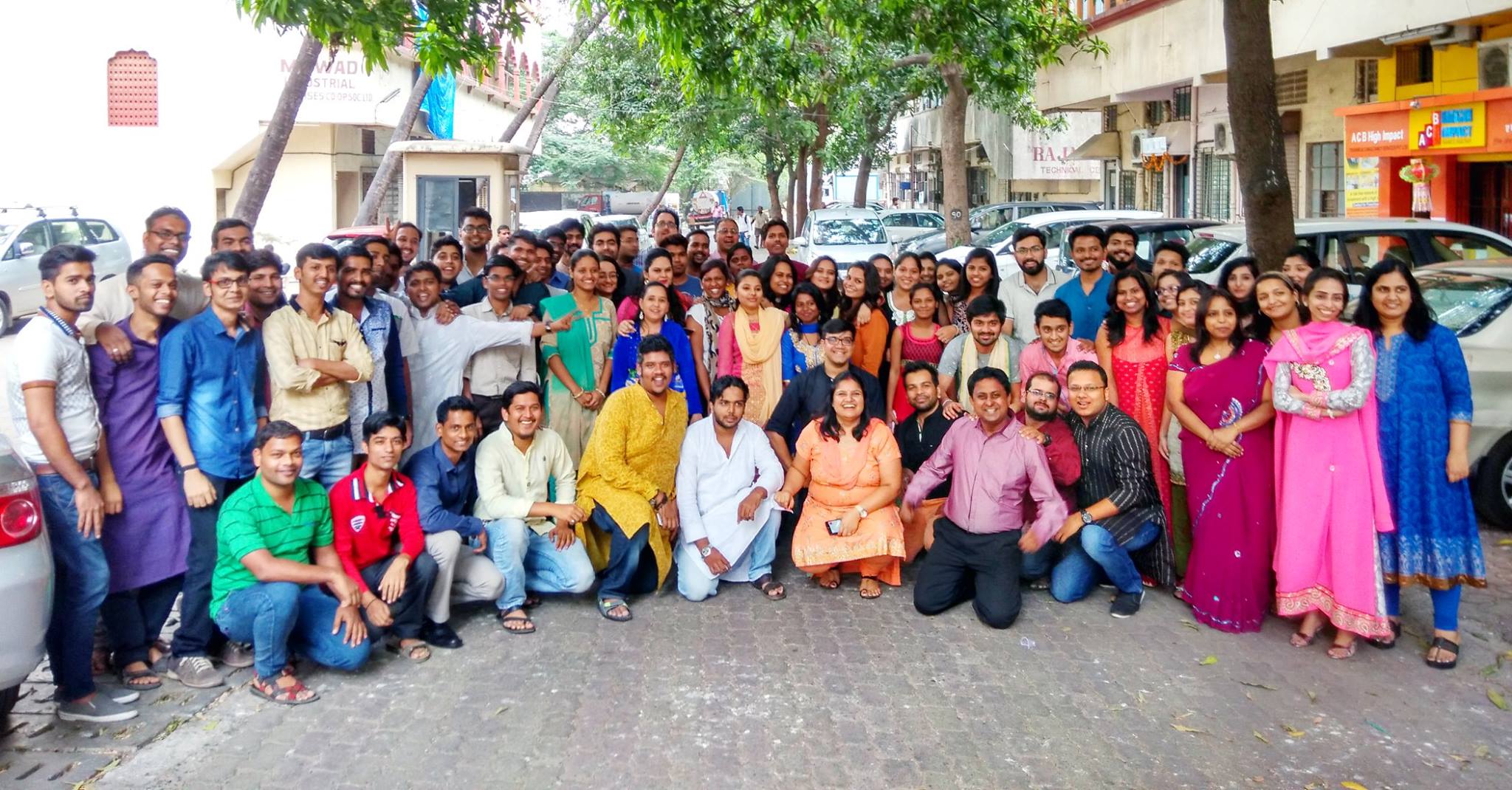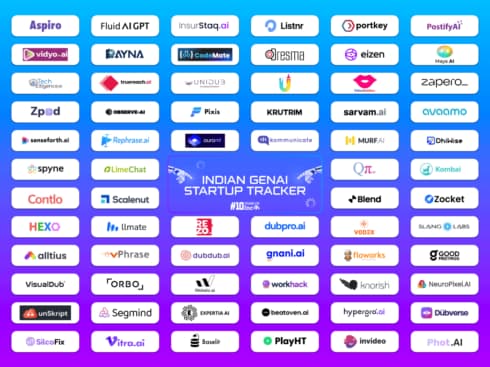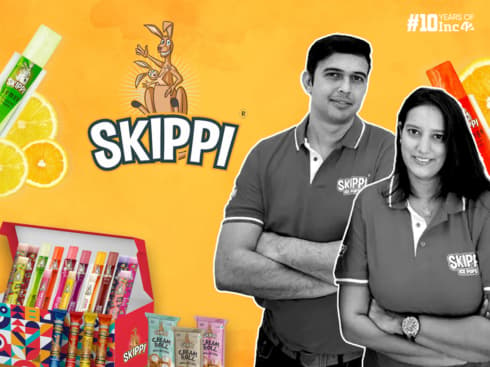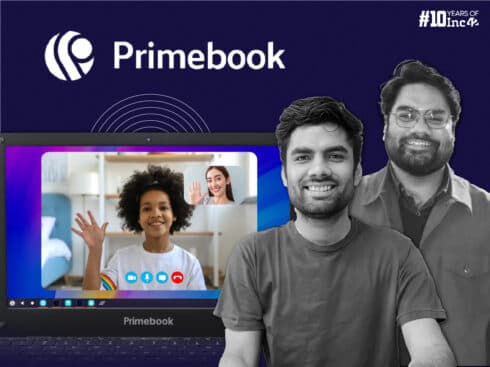Mumbai-Based Purplle Competes With Nykaa, Flipkart, Amazon Etc. In Beauty Ecommerce
“A shopper who bargains is attracted to discounts; a high-end shopper is looking for value.” This quote aptly describes Manish Taneja’s beauty ecommerce startup Purplle. The portal, which was launched in 2012, with a small 800 sq.ft warehouse space in Mumbai was, at one point, struggling to get the word out with a mere $1240 (INR 80K) marketing budget. Today, it is a rising star in the niche Indian beauty ecommerce space amidst players like Nykaa, Flipkart, Jabong, Myntra, Amazon India and more.
Purplle has seen its fair share of successes and failures since inception. Manish Taneja and his co-founder, Rahul Dash, along with CTO Suyash Katyanani, however, believed in only one philosophy.
“Customers have to be the centre point of the conversation and sale. And the aim of a beauty ecommerce portal should be to provide solutions for their needs. A hard sell based on discounts is a big no.”
From three people who worked out of a cramped office, Purplle now boasts of an over 17000 sq.ft. warehouse space and a total of 120 employees, 50 of which manage the warehouse and logistics side of the business. As claimed by the founders, in the last six months, the startup raked in monthly revenues of $2.17 Mn (INR 14 Cr) -$2.3 Mn (INR 15 Cr) with 100% growth. They have also declared $46 Mn (INR 300 Cr) in gross merchandising volume sales, with an average ticket size of INR 1,500 for FY ’18.
With a $6 Mn Series B funding round in place, the startup has already gained the attention of few of the leading startup investors including Blume Ventures, JSW Ventures, Chennai Angels, Mumbai Angels, and IvyCap Ventures.
The company presently has a daily conversion rate of 10%-11% across website and app and claims to be able to break even by September 2017.

The Purplle Founders’ Journey
Before being bit by the entrepreneurial bug, IIT Delhi graduate Manish was associated with Fidelity Investments in Mumbai, while IIT Kharagpur batchmates Rahul and Suyash were working in an edtech company called Vidya Science. As fate would have it, they ended up being roommates. So, when the time came to startup, they banded together to build something in beauty ecommerce. Manish does admit that when they started out, none of them had any ecommerce experience.
When they began, Indian ecommerce had just started to ripen and the only names one could hear were Flipkart, Snapdeal, Myntra, Quikr, BigBasket, etc. Beauty and wellness was almost a below niche sector under the broader category of online retail and Purplle was scraping the bottom of the barrel – in terms of visibility and market share.
“Until about five or six years ago, the offline beauty shopping experience in India was patchy and biased. The bias still exists which leads to a compromised customer experience,” says Manish.
He further adds, “During our initial days of research, we found sales to be a numbers game for brand loyal employees, whose ultimate aim is to sell their brand’s products. So, when a consumer comes to them, they are only interested in the finale sale, without even understanding the real requirements of the consumer. This kind of scenario leads to a hard sell, where ‘our brand is the best’ is the major motto in order to maximise the sale. But, we wanted to be different from this.”
2012-2013: The Beginning Years Of Purplle
The website was officially launched on January 2012 with an inventory-led model, renting a small 800 sq.ft. warehouse to stock items. Manish reveals that in the initial few months, they didn’t even have the best brands to sell.
Since beauty ecommerce was unknown as a vertical, wholesalers and brand reps trusted general trade more via stores like Shopper’s Stop, Lifestyle and even local stores. He even admits that, at one point, they were picking up inventory from the CFD Canteen (Central Defense) where old SKUs of good brands were available at dirt cheap prices.
He does rationalise the whole experience by adding, “But we learnt that in a new business in general, nothing moves in the first six months. No matter how hard you apply force.”
So, of course, the logical step for the company was to get the word out there about the brands available and the platform itself. They used a two-pronged approach to crack this issue. First, Digital marketing – where they relied on great content to amass a community of readers who could turn users. The other thing they did was Partnerships – with a loyalty programme called Payback to increase their marketing outreach.
After six months of launch, the Purplle team boarded the SEO ride in July 2012 and focussed on Google advertising. “We outsourced this part of the digital marketing effort to a small agency in Pune with a bare bones budget of $1240. Our return on that particular effort was 10x. We managed to make sales worth $12.4K (INR 8 Lakhs)-$15.5K (INR 10 Lakhs). It was a case of low cost acquisition and no competition.”
2013: When Things Changed For The Better
2013 was a banner year for the company as things started snowballing quickly in the right direction. Inventory was now being handled by modern trade teams and larger brands started showing interest in associating with the platform.
But it was the community that Purplle trained its focus on. They launched a Q&A platform with a couple of in-house experts that aimed to encourage customers to ask all the questions that need answering. Be it regarding the kind of eyeliner or shampoo to use to which brands were the best for what product. It caused the community to engage with each other in an organic manner. “Google loved this platform and rewarded us with increased traffic. Organic traffic shot up by 11x in 2013.”
With the company showing growth, they also managed to raise their first round of funding. A $600K angel round led by Blume Ventures. The Chennai Angels and Mumbai angels also participated in the round.
Also, with the collected data, Purplle founders gave a run to an ecommerce platform, based purely on data and machine learning algorithms. Thus powering their way towards beauty recommendations – a sought-after blog category even today.
2014-2015: Building The App, Pivoting To A Full-Stack Beauty Destination
Manish divulges that the company grew at 13% MoM in orders and unique users for 2014. The company also managed to raise a Pre-Series A from IvyCap Ventures in 2015 after a six-month break and an undisclosed amount in Series A funding from Blume Ventures, Chennai Angels, and Mumbai Angels.
At the time of raising Series A, they were still mostly a desktop-facing platform. And Suyash was the only tech person as well as the CTO of the company, who built out the ML algorithm, inventory management and recommendation engine for the website.
The biggest challenge that Purplle undertook was launching a mobile-friendly version of the same. “Our only tech person was Suyash when we first thought about launching the app in December 2014. And the Android app was riddled with bugs when it came out in June 2015.
That’s when we finally decided to expand our mobile and website DevOps team.”
Further, it also became impossible for their warehouse to store inventory due to high order volumes. So, one of the major challenges the company tackled was to move to a bigger 17,000 sq.ft. warehouse in an outer suburb of Maharashtra – Bhiwandi. As with making all such changes, logistics was the biggest issue to tackle.
Hyperlocal Beauty And Wellness: A Gambit That Didn’t Pay Off
During this period, Purplle also tried to digitally onboard offline beauty salons on its platform to ensure that Purplle users get a full-stack beauty and grooming experience. This was a considerable challenge that time, which in recent times brands like UrbanClap, Enrich Salons (with the acquisition of Belita), VLCC (with Vyomo’s acquisition) and Quirk’s AtHomeDiva have pulled off well. However, Purplle was not able to do so.
The idea was same: to have a user log in to buy products and then take it a step further by booking appointments for their next grooming session. Or to check out what kind of on-demand services they needed and if any local salon would provide for the same. Purplle would charge a commission for the same.
In an earlier interaction in 2014, co-founder Rahul Dash had spoken to Inc42 about the same. “The beauty and grooming services forms the second pillar of consumption and is a ~$3 Bn industry. A big part of the market is unorganised and provides a huge opportunity.” Although, the company claims to have onboarded 7,000 salons for the same, but stopped the service amidst losses and trust issues.
“We faced a lot of trust issues on two fronts when we entered this vertical. For customers, having a beautician come home required a degree of trust and comfort that we could not really provide. And then, salon chains preferred to go with larger ecommerce marketplaces as price points in India require volume bookings, which were not happening at the time. Sometimes, timing is not everything,” Manish philosophises, as the reason for pausing the endeavour.
Launching A Private Label: StayQuirky
Purplle, like other ecommerce providers Flipkart, Amazon, Nykaa, Urban Ladder, has also forayed into the private label space by subsuming in-house brand StayQuirky. This is so because, the natural life cycle of the retailing experience requires foraying beyond aggregation and launching an identity of one’s own. While Flipkart has Divastri and Metronaut, Amazon has Symbol and Nykaa has an eponymous label, Purplle acquired a brand already operating on the platform.
StayQuirky was launched in 2015, and it was just one among the 650 brands on the Purplle platform. The brand was started by Pratik Sonthalia, who comes from an extensive advertising and marketing background. Pratik reveals that Purplle is a trader at heart and provided great mentoring and support in the initial few months of launch.

“Purplle has an engine that includes providing a seamless customer experience online by focusing on unit economics and not carrying too much inventory. A practice we follow at StayQuirky too. But StayQuirky is a brand, a lifestyle message for the quirky girl who is just earned her first paycheck and wants to treat herself.”
StayQuirky’s target audience and brand philosophy meshed well with the primary kind of audience that Purplle had as consumers, which led to a greater integration between the two. They started off with 200 nail colours priced at INR 88 and going up to INR 250 and have the capacity to roll out up to 1100 shades. Although Pratik is reluctant to reveal current growth figures, he does say that 47% of all nail colours being bought on Purplle are from the StayQuirky. He credits a careful modulation of Instagram marketing and customer outreach to this spike in figures.
The revenue returns, coupled with StayQuirky’s philosophy, led to a natural merging of the two entities in April 2017. “It isn’t so much an acquisition as a strategic alliance that we have formalised now,” Pratik says.
To which Manish adds, “StayQuirky is a brand which speaks to women who are quirky and different. Not the regular kind of women. So the products and ethos reflect the same. It’s a premium product at entry level price points, so it was a natural fit for us.”
Decoding The Purplle Platform: Chatbot, Audience And More
While traditional players such as Amazon, Flipkart and niche player Nykaa served up category-wise recommendations, Purplle has relied purely on tech and content to come to their rescue. The Q&A platform and user community created in 2013, helped inform the recommendation platform and Chatbot assistant.

As Manish says, “Perhaps, at heart, we are a tech company trying to revolutionise beauty. Thus, we decided to utilise data to get a clear understanding on our target consumer.”
The data generated from the user community helped them to build buckets of consumers and refine their target audience more accurately. Purplle has bucketed its TA (target audience) into three sections. The first 75% of consumers are in the age range of 23-25 – these are recent graduates who have just joined the workforce and need to look smart and professionally groomed. They use the advice seeker forum and also watch the explainer videos for simple hacks such as applying the winged eyeliner. “They are the ones who engage with the personalised consumer-facing content we put on the platform.”
The second and third TAs fall under the age range of 27-35. These are the multitaskers, go-getter women who have a lot on their plate. They come to the app, log in and buy exactly what they need. These are the repeat order customers. And the last kind is the beauty aficionado who have the time and wherewithal to indulge in buying new products. They are beauty conscious but are always eager to try on new items.
These user profiles becomes useful for the product recommendation solution to work seamlessly, when a user comes on the platform. This further helps the recommendation engine – the chatbot – to assess a new user’s complexion, hair type, makeup use and more in order to provide better service.
Manish revealed that the algorithm is trained to understand and apply more than 100K keywords in order to make product recommendations. There is a solution on offer for everything. And the deeper a user forays into the platform, the more the algorithm learns about their purchase history, as well as the kind of personality they possess in order to make more refined sells.
“We treat beauty as a data resource and so the platform works on the premise of customer with context in which they use the product and knowledge validation. This knowledge comes in from experts, fellow users who use the product and review it and brand claims. All of which is clearly displayed with every product,” shares Manish. “It’s not about the brand, but the right brand for the right consumer. That kind of precision requires data efficiencies.”
In fact, Manish is not afraid to reveal that the co-founders themselves are now also learning to wear makeup in order to become more diligent at recommendations. “You’re surprised at how male co-founders run an innately female domain business? It is gender-agnostic is it not? Both can do a good job as long as they are diligent in their recommendations.”
The Burgeoning Beauty Ecommerce Industry In India
Up until a few years ago, trust was a major impediment for beauty ecommerce to do well. This is so because, beauty, unlike books and electronics, is an intensely personal choice for buyers. With players such as Flipkart, Myntra, and Jabong – a certain degree of trust already exists with the sellers, although it has to be noted that all these players along with AmazonBasics only carry beauty items as part of their coterie – they are not entirely beauty-focussed.
Also, the beauty ecommerce sector has been majorly dominated by women buyers. In fact, it’s only from the last two years, that men’s beauty and grooming has seen a lot more play with entrants such as Beardo, Elitify, Bombay Shaving Club and Ustaraa (a sub-vertical of kitschy ecommerce player Happily Unmarried). At present, in terms of heavily-funded players , we can name only a few such as Nykaa, which has raised a total of $15.8 Mn in funding over three rounds and boasts of $43.3 Mn in GMV sales in 2017. Nykaa too began operations right around the time Purplle did and has maintained its pole position in the beauty ecommerce market.
Internationally, too, beauty ecommerce has seen a few names and big ticket deals. Vaniday, StyleSeat, and peer-to-peer beauty marketplace Dotfully as well as Spanish/Latin American Moira have received funding.
But, this tide is changing now. According to a report by marketing consultant firm RedSeer, the cosmetics industry in India is expected to implode soon. From $6.5 Bn today to $29 Bn by 2025 at a CAGR of 25%. This means that India would become one of the top five global markets, contributing about 5% of the global cosmetics market – both offline and online.
Given the fact that an HBR report recently concluded that India, with it’s 462 Mn Internet users is poised to become the largest user base, it is no wonder that the beauty ecommerce vertical looks to cash in on the boom.
When it comes to just online, the market size is significantly smaller and contributes about 2% to the total cosmetics market, the RedSeer report states. The online cosmetics market size stands at $50 Mn and with well-established brands such as Lakme, Revlon, MAC, Estee Lauder and more also entering the digital route to reach their customers, competition is rife in beauty ecommerce.
Manish considers the space to be healthily occupied, though. “Our core differentiator is the data play,” he says. “Our recommendations are not based on past user experience or browser history. It is based on what the customers at the time of logging in, and we try and provide them with those solutions. Our whole goal is to understand our customers better through data.”
Manish also lists transparency with all stakeholders – customers, employees, and vendors – as well as frugal unit economics that does not depend on heavy amounts of inventory to stand out from the other beauty ecommerce competitors. “Our culture is built on honesty, be it disclosing our financial status or being open with our vendors regarding payments and shipments. We believe in empowering women and instill confidence in them through beauty.”
Focussing On Reducing Return Rate And More: The Ecommerce Way Forward For Purplle
Beauty is as beauty does. This may sound like a purely superficial statement, but it holds especially true when it comes to the future of this beauty ecommerce platform.
Purplle has already onboarded internationally known brands such as Maybelline, Revlon, etc. to make up a kitty of 650 brands comprising 50,000 SKUs in total, the founders are now focussed on upping the ante. By exclusively importing brands to India through the Purplle platform. Vipera from Poland, KP from Paris and Moda Cosmetics from Istanbul are a few of the lesser-known names on the platform. Just like Nykaa onboarded MAC, Bobbi Brown and Clinique, recently.
Manish informs me that registering a foreign brand is a four-month process. And so, the focus is to introduce 30 brands in India in the next two years. Take private label StayQuirky to the next level by entering the full-stack, toxin-free makeup category with eyeliners, shadows, foundation etc. is another milestone the Purplle team is targeting.
The other core target for the beauty ecommerce startup is to reduce return rate on the platform, as well as work on tightening the algorithm to refine product recommendation. On the subject of physical retail stores, Manish remains non-committal. “We are looking to power our offline stores through data only, but not in the near future.”
For a beauty ecommerce company begun by three founders with zero experience in the field of ecommerce, the data-driven approach seems to be the way forward to a glittery future for Purplle.
































 Ad-lite browsing experience
Ad-lite browsing experience